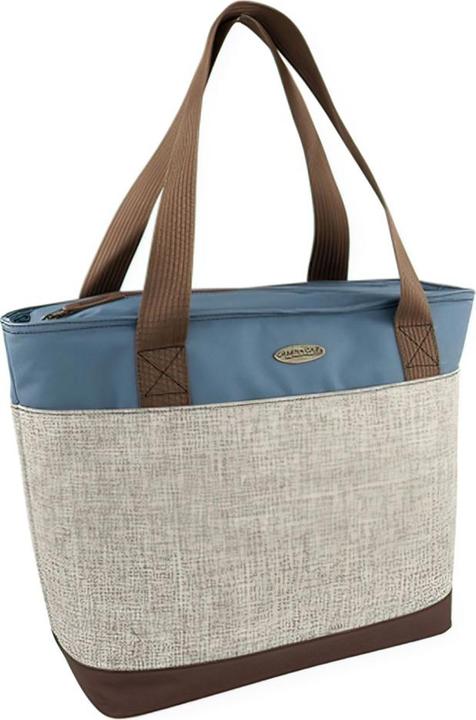

Chilled, not cooked – cool boxes for every temperature
Lukewarm beer at a waterfront barbecue tastes awful. You need a new cool box. Read on for my guide.
A cool box is a portable, sturdy container to keep food, drinks and other items cool. They're used for mobile leisure, sport and trips. Our product range includes cool boxes, cooler bags and cooler rucksacks.
And beer.

How long will you be out and about?
If you're going to be out for a long time, you'll appreciate a freezer function which makes your food last longer. A compressor cool box can cool its contents down to -22°C.
An absorption cool box would be more suitable for a few days or a week-long trip. You can even store ice cubes in the evaporator component of some models. Absorption cool boxes aren't as powerful as compressor versions, but they still keep their contents cool.
A thermoelectric cool box keeps its contents cool without actively chilling it, so you'll need to do this before you leave. This option isn't suited to trips longer than one or two days.
Finally, a passive solution enables you to spend a pleasant day by the water or at the park with chilled drinks and food at all times.
Size matters
Firstly, you need to think about how much space there is in your car. It's also worth considering how many people will be using the cool box and how long you're aiming to manage without going shopping. Are you going to be travelling through remote areas? Bear in mind that larger cool boxes use more energy – is this additional energy consumption really worth it?
Depending on the cooling technology, the estimated capacities of the different models are:
- Passive: 4 - 100 litres
- Absorber: 31 - 40 litres
- Thermoelectric: 8 - 37 litres
- Compressor: 10.5 - 88 litres


Hot outside, cold inside
When using your portable cool box, be aware of the climate you'll be storing it in. Thermoelectric and absorption cool boxes chill their contents to around 18 to 30°C below the ambient temperature. However, this is definitely not feasible in temperatures of 30°C and over, so a compressor cool box is advisable for warmer climes. The supercharged chilling power of these models can even freeze their contents in extremely high ambient temperatures.
Some compressor cool boxes have two separate cooling zones. This means that one can be used for chilling and one for freezing. Some models can also keep their contents warm as well as cool, but they aren't designed to heat food. However, if you put a warm apple cake in the cool box that has been heated to 65 degrees, it will stay warm for longer.
Depending on the model, you can reach the following internal temperatures when it's around 40°C outside:
- Thermoelectric: 22°C - 10°C
- Absorber: 20°C - 10°C
- Compressor: 10°C - -22°C
Varied volumes
Depending on where you put your cool box and how sensitive you are to noise, a device's operating noise level can be an important factor. The noise level depends on the cooling technology used by each cool box:
- Passive: silent
- Absorber: silent
- Compressor: occasional low-level noise
- Thermoelectric: continual fan noise
No empty batteries
The built-in battery protection of compressor cool boxes prevents the battery from discharging completely. As soon as the charge level of your car battery has dropped to a preset value, the power supply for the cool box is automatically interrupted. This means that its contents will get a little warmer as time passes, but you should still make it home with a chilled drink.
Because absorber cool boxes can run on electricity and gas, they're a good way to protect your car battery. Some thermoelectric models also have a low voltage monitor – also available as an optional accessory and protects the battery by automatically switching it off at low voltages.
Efficiency is also important, of course. Every cool box powered by electricity has to be checked for energy efficiency by law. However, absorber cool boxes aren't required to have an energy label because they mainly run on gas.
Four technologies
We differentiate between four main types: compressor, absorber, thermoelectric and passive boxes. They chill their contents with the help of battery packs. The main features are:
PASSIVE
- Classic cool box
- Special gel in the freezer blocks ensures minimal heat loss
- Batteries come in an insulated box or bag
- Food and drinks need to be chilled beforehand
View all passive cool boxes available at Galaxus
ABSORBER
- Gas chilling enables travel without an electricity supply
- Quiet
- Chilling power depends on the ambient temperature
- Three power supply options: 12V DC (for use in the car), 230V AC and gas
THERMOELECTRIC
- Low cost
- Lightweight
- Good performance, even when tilted
- Normally heavily dependent on the ambient temperature
- Can run on 12/24V DC and 230V AC
View all thermoelectric cool boxes available at Galaxus
COMPRESSOR
- Good chilling power, even in extreme external temperatures
- Powerful cooling enables chilling and freezing
- Low energy consumption
- Good performance, even when tilted
- Can be solar-powered
- Built-in battery protection
- Can run on 12/24V DC and 110 - 230V AC
View our complete range of compressor cool boxes

The Queen
Then there’s the queen of cool boxes. My colleague Michael put it through its paces last year and was pretty impressed. Find the review here:
And you can find the full Galaxus range of cool boxes here.
Need more guides? You can follow my profile here where you'll always find good advice. Well, nearly always.
From radio journalist to product tester and storyteller, jogger to gravel bike novice and fitness enthusiast with barbells and dumbbells. I'm excited to see where the journey'll take me next.













